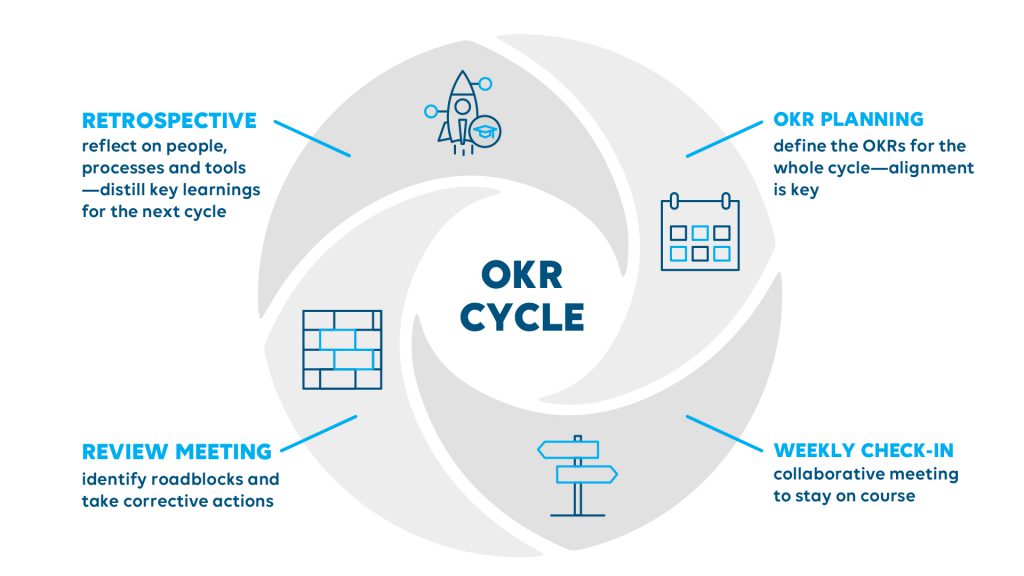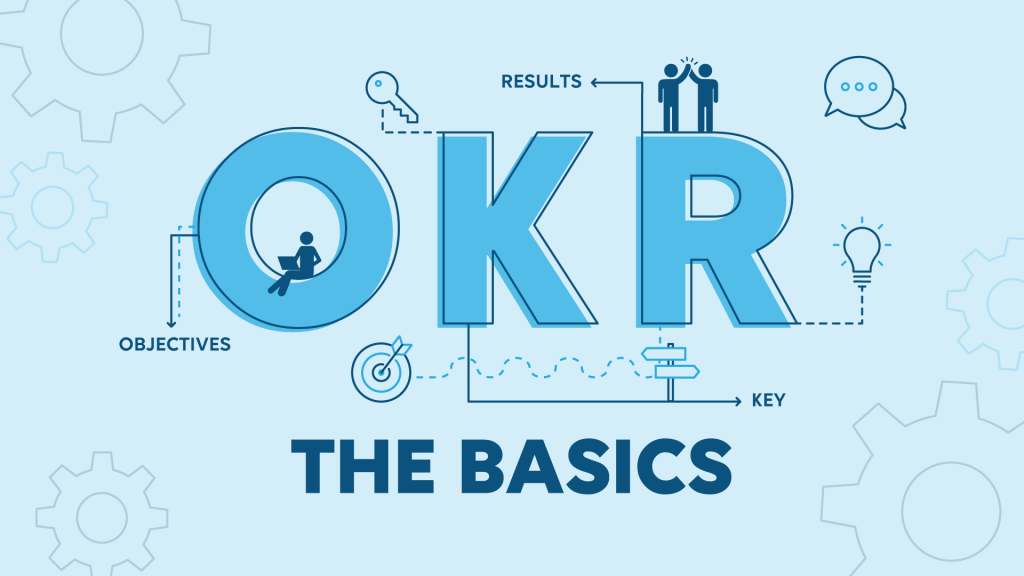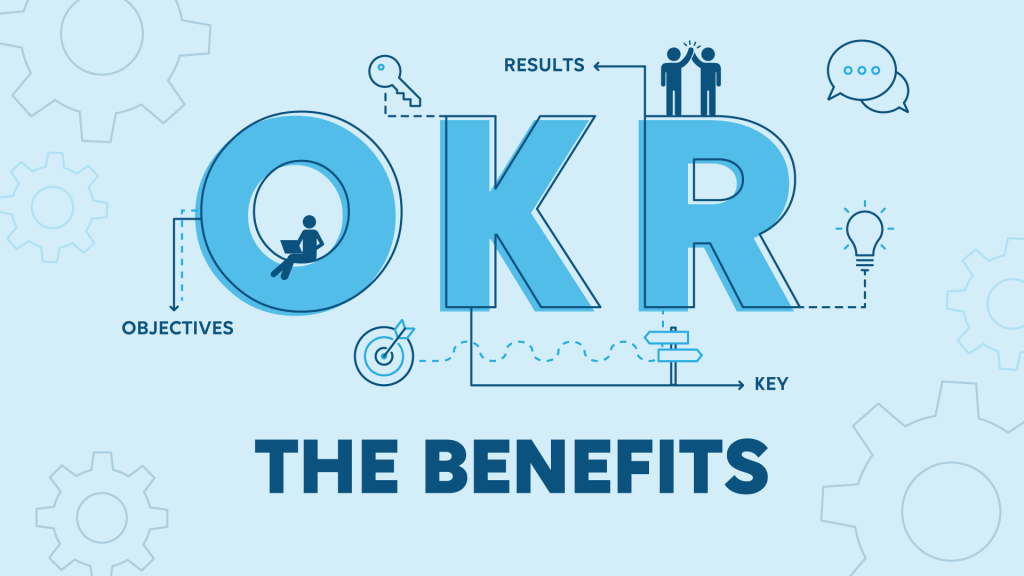Implementing the OKR framework is not as clear-cut as just setting goals and trying to reach them. The most vital and challenging part is ensuring maximum company-wide alignment and engagement along the entire journey, which is a continuous process. This process is what we call the OKR cycle.

The OKR cycle, which consists of various events, determines the “pace” of the OKR method and the time frame in which the Objectives are to be reached.
A typical OKR cycle is composed of the following events:
Knowing how to correctly implement every single one of these events is crucial to ensure the quality of your Objectives and will also help you with accurately measuring the impact of your implemented actions.
OKR Planning
The first step in the OKR cycle process is defining the OKRs for that cycle. This takes place during the OKR planning phase. Based on the company vision, corporate goals, and the current reality, teams set their own high-quality OKRs.
Teams should ensure that these OKRs are outcome-based, engage the perspective and creativity of all team members, and are metric-driven so they can be tracked and evaluated. Moreover, these OKRs should be made visible and transparent to all employees.
But above all, every team’s OKRs need to be aligned with the overarching company vision (vertical alignment) and the OKRs of other teams (horizontal aligment).
- Vertical alignment should result from a bidirectional negotiation of company strategy (in the form of company OKRs) with the current reality your team faces.
- The goal of horizontal alignment is to remove redundant efforts and interdependencies, and to maximize the impact of shared initiatives.
Want to learn how you can easily create quality OKRs? Read “OKRs: an introduction to the basic concepts”.
Weekly Check-In:
To drive performance and accountability, the progress on OKRs needs to be reviewed on a regular basis. One of the most prevalent causes of failure is that people set OKRs and then forget about them.
The Weekly Check-In should be a collaborative meeting that results in an updated plan that helps everyone achieve their goals (Objectives). During those check-ins, the following questions should be answered:
- What did we do yesterday to achieve our OKRs?
- What can we do today to achieve our OKRs?
- Are there any impediments that make progress toward our OKRs harder than it could be?
Review Meeting
The Review Meeting is a more formal meeting, which may include stakeholders and the management team. It typically takes place halfway down the cycle. Its main objective is to consider which OKRs are at risk, what obstacles and dependencies exist, and what actions should be taken to correct the course of the OKR.
A Review Meeting can also happen at the end of the cycle. This meeting then serves to re-evaluate OKRs that have not been achieved in the previous cycle and decide on whether they should be included in the next cycle. The meeting is also an opportunity to share what commitments will be made for the upcoming cycle and discuss any misalignments.
Here are some questions that could be asked during this meeting:
- What has changed? (To evaluate the outcome)
- What is in the way? (To mainly identify roadblocks)
- What can we try? (To determine innovation opportunities)
Retrospective
Toward the end of the cycle, every team should inspect and reflect on people, processes, and tools. The focus should not be on the achieved end score but on the key learnings that your team will take to the next cycle. This should facilitate continuous improvement and adaptation.
- What worked well?
- What could be improved?
- What do we commit to improving in the next cycle?
Discover the complete blog series on OKRs

BLOG | OKRs
PART 1 – Introduction to the basic concepts
Let’s deep dive into the basics of OKRs: what they are and how you can implement them.

BLOG | OKRs
PART 2 – The benefits of OKRs: F.A.C.T.S.
What can OKRs bring to a company, a team, and you as an individual? Let’s talk F.A.C.T.S.!